VISITORS FROM THE PAST
After many years in a private collection in Germany, eighteen historic paintings and drawings by Tatyana Apraksina were recently returned as a gift to their author.
All these works were created in Leningrad in the 1970s and 80s. The earliest dates from 1974.
These visitors from the past were first on view at T. Apraksina’s studio on each of three days:
Thursday, October 29, 2015 – beginning at 7 p.m.
Friday, October 30, 2015 – beginning at 7 p.m.
Sunday, November 1, 2015 – beginning at 5 p.m.
Due the number of additional people wishing to view the exhibit, the show was extended through the end of November.
Below are photos from the exhibit, followed by an article about it.
Reproductions of works from the artist’s early period and part of her cycle “Gaze from Within” can also be seen at Tatyana Apraksina’s Studio.
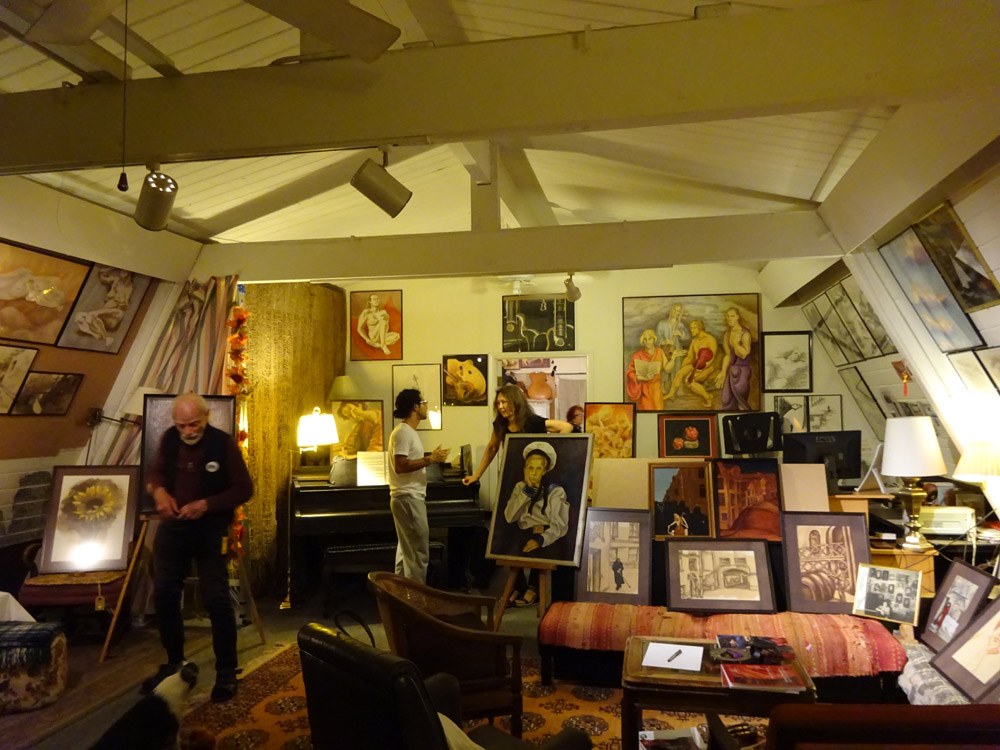
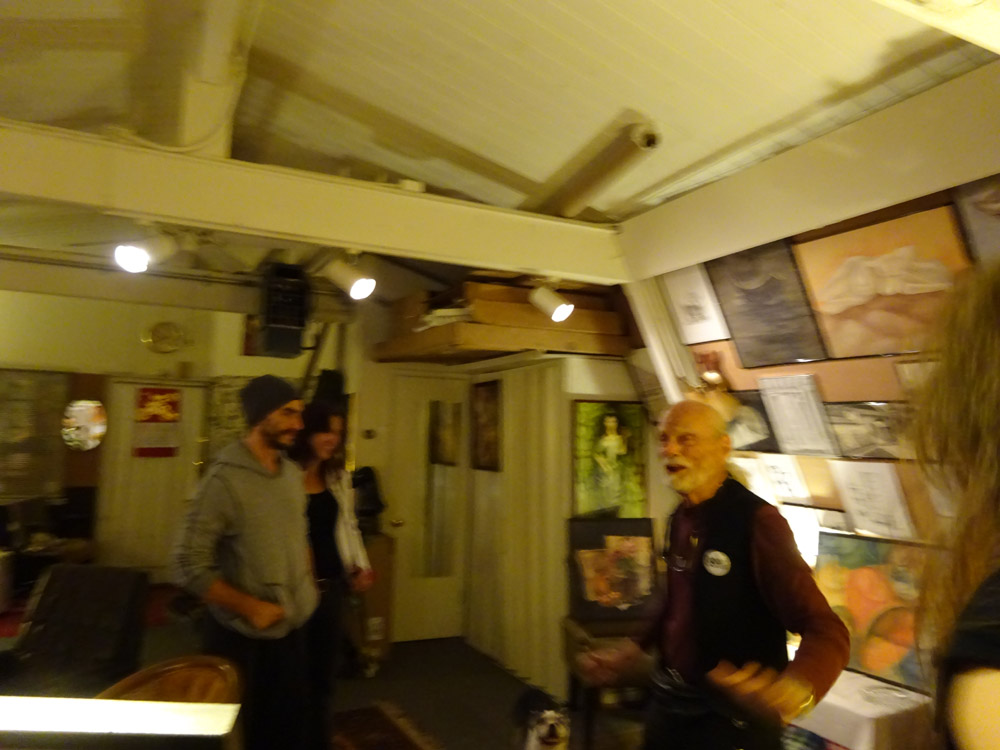
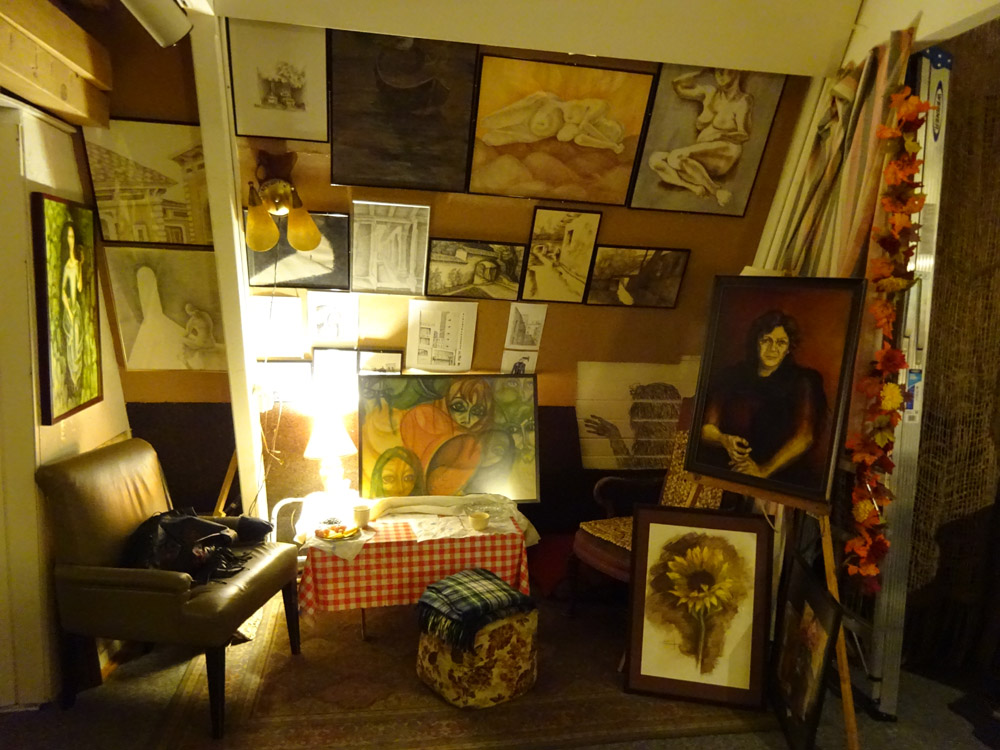
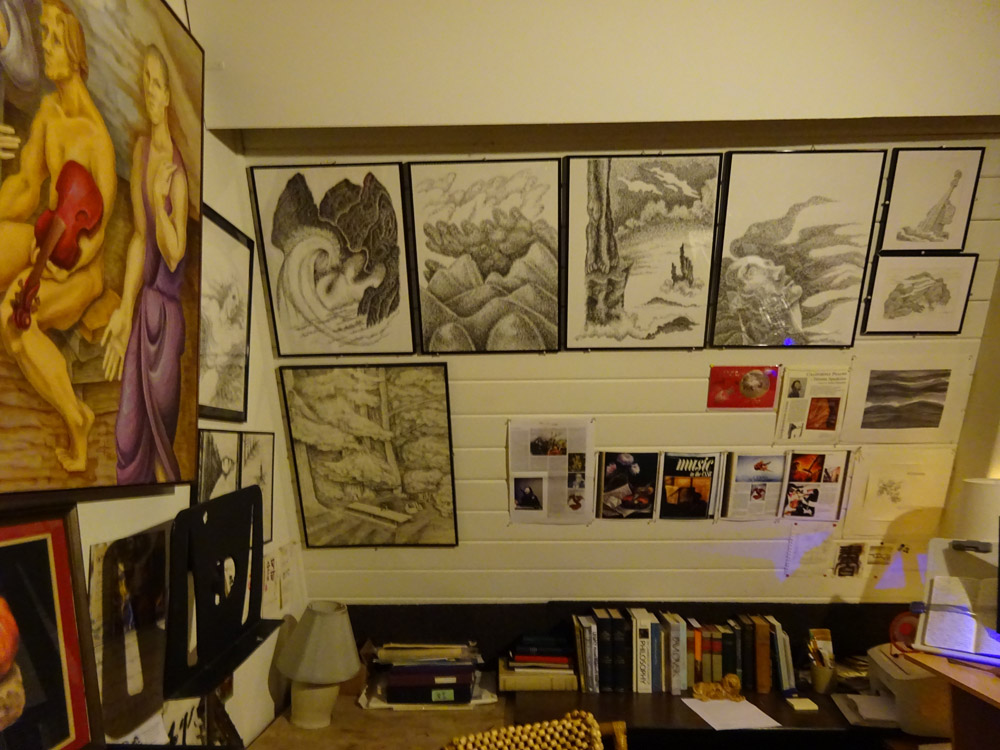
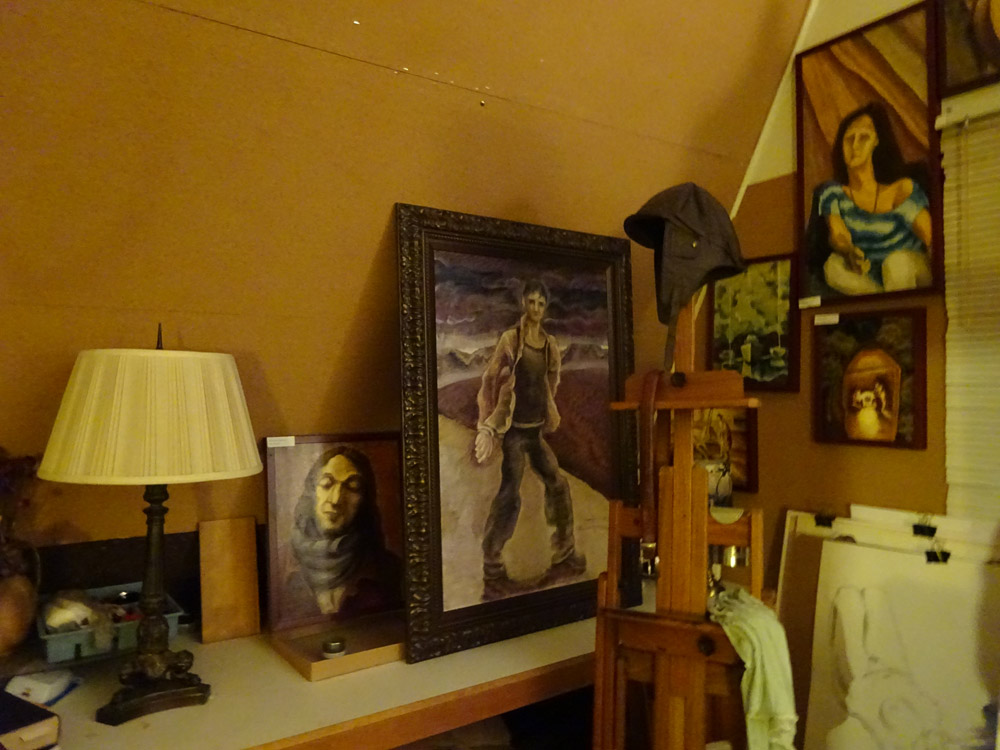
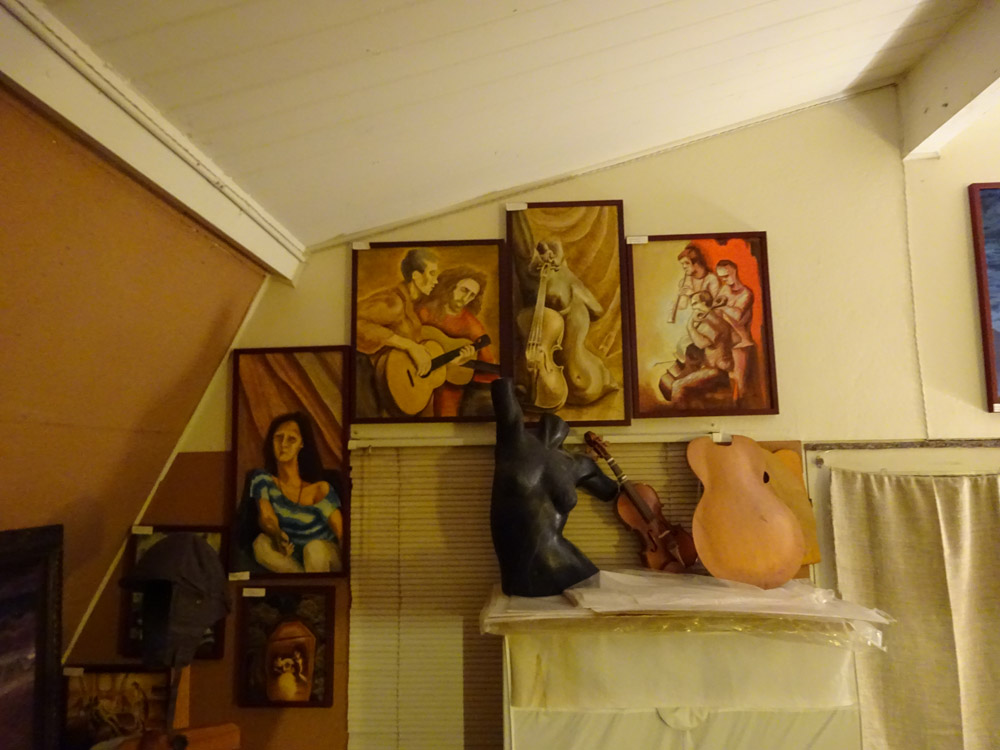
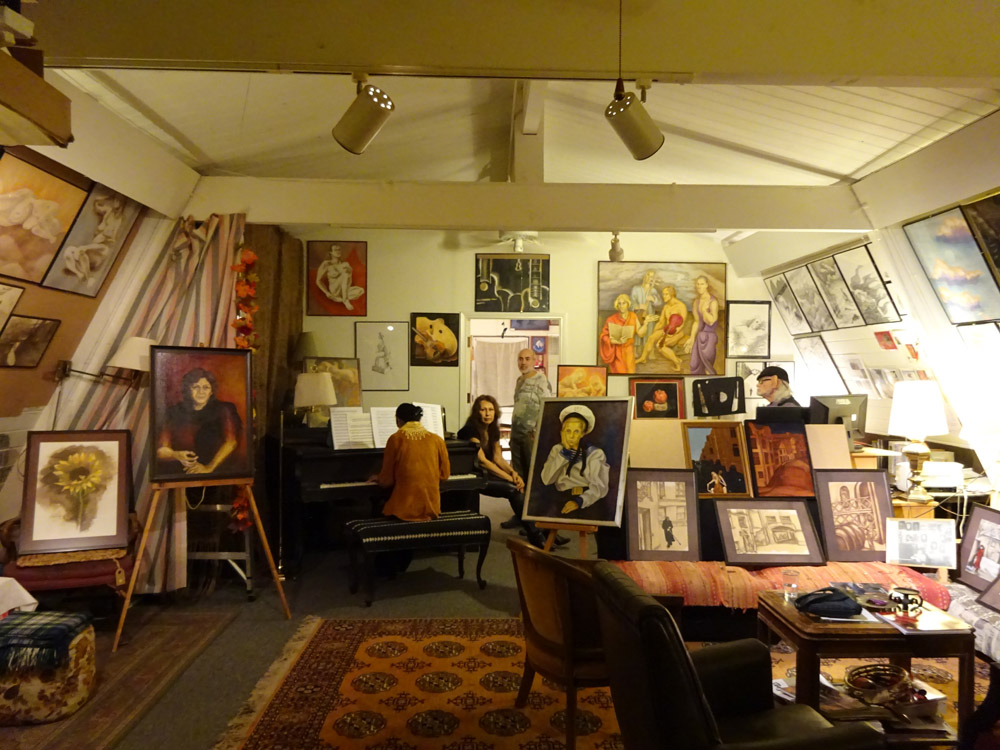
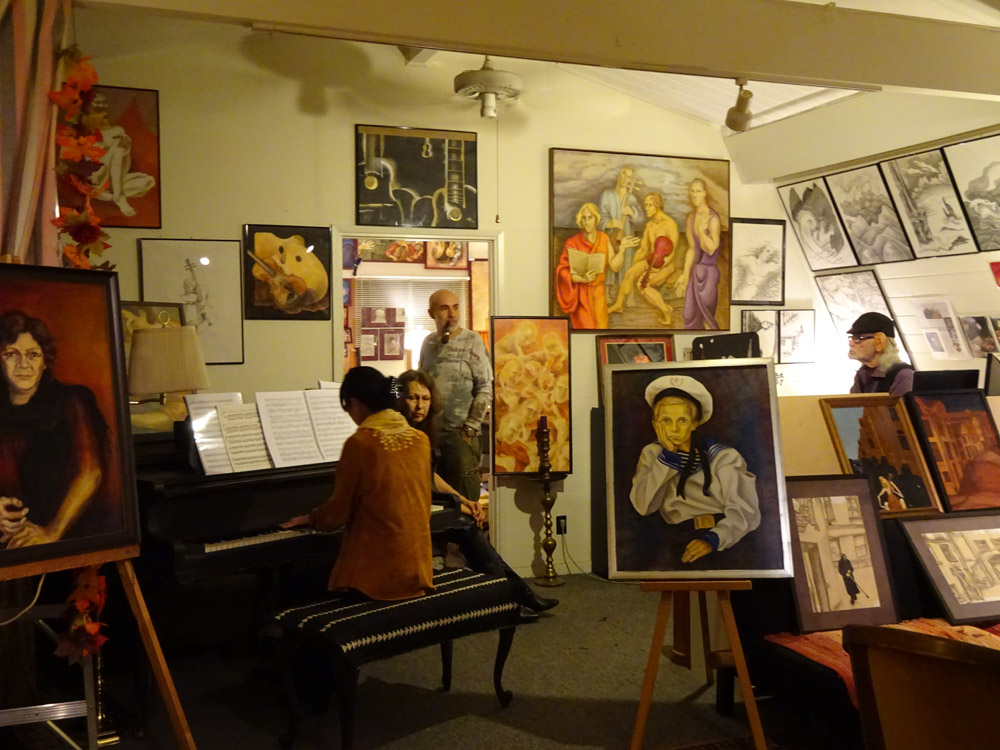
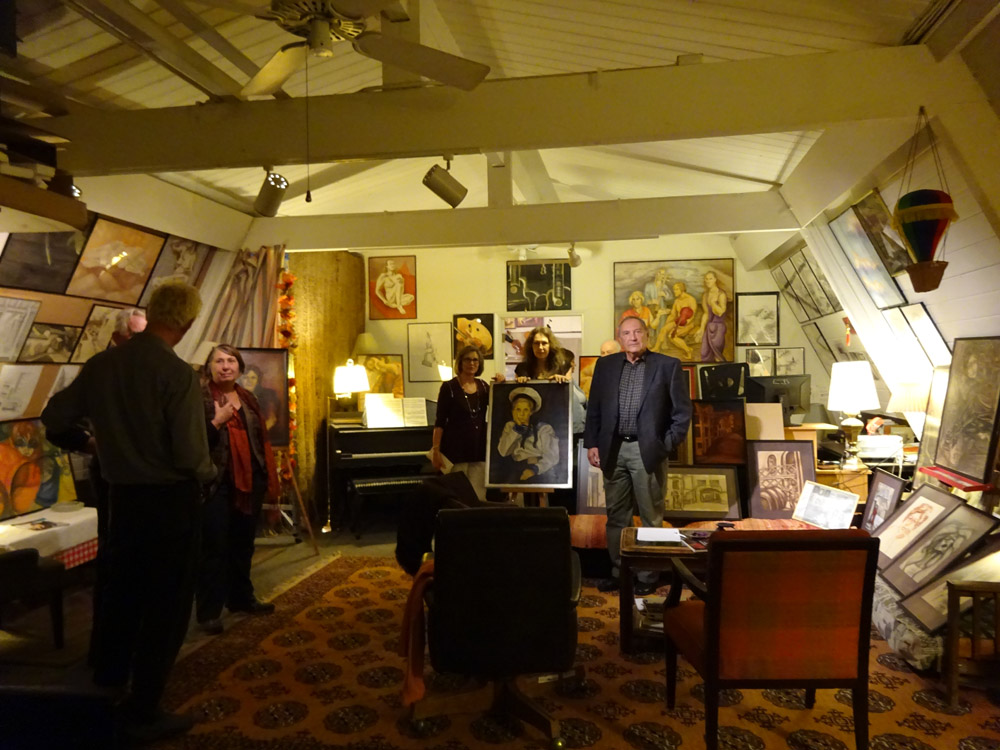
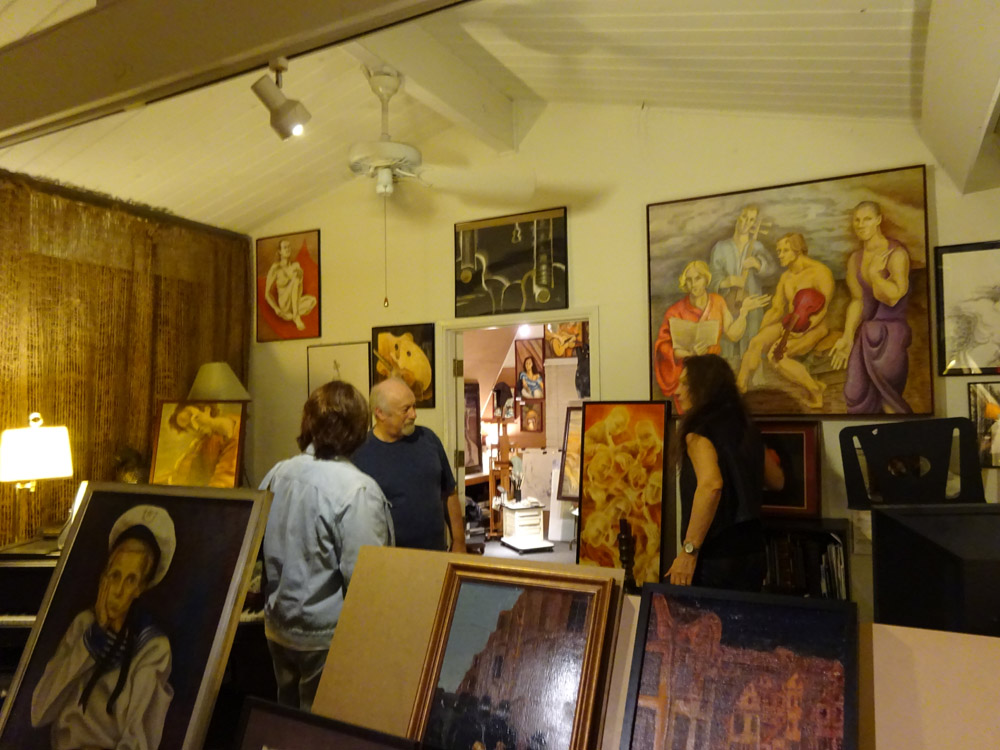
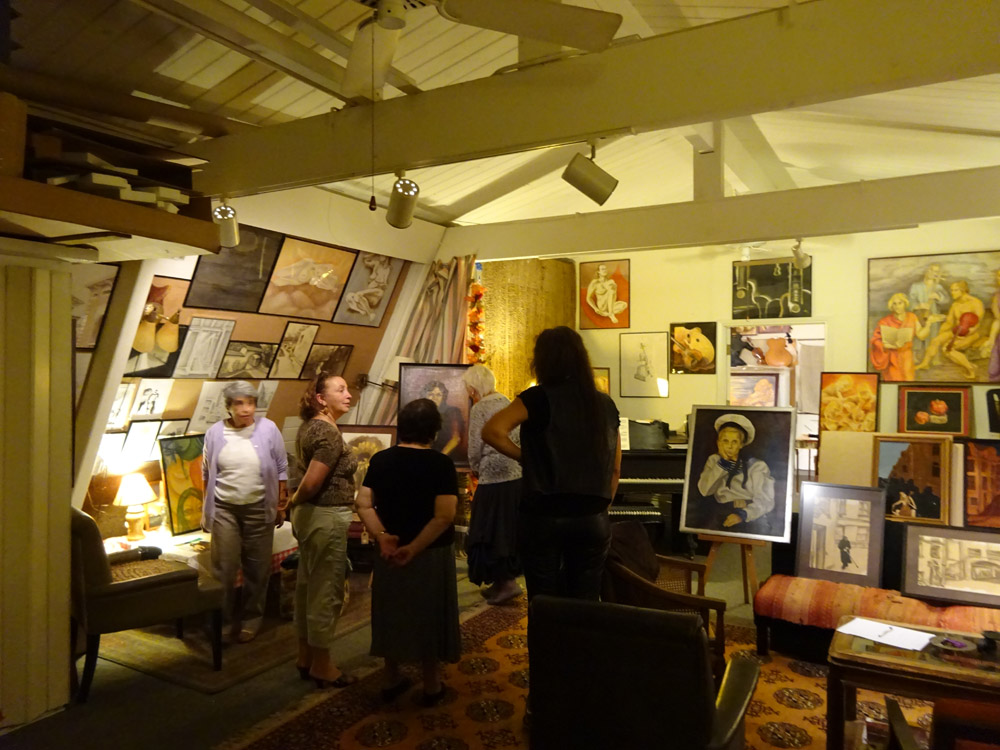
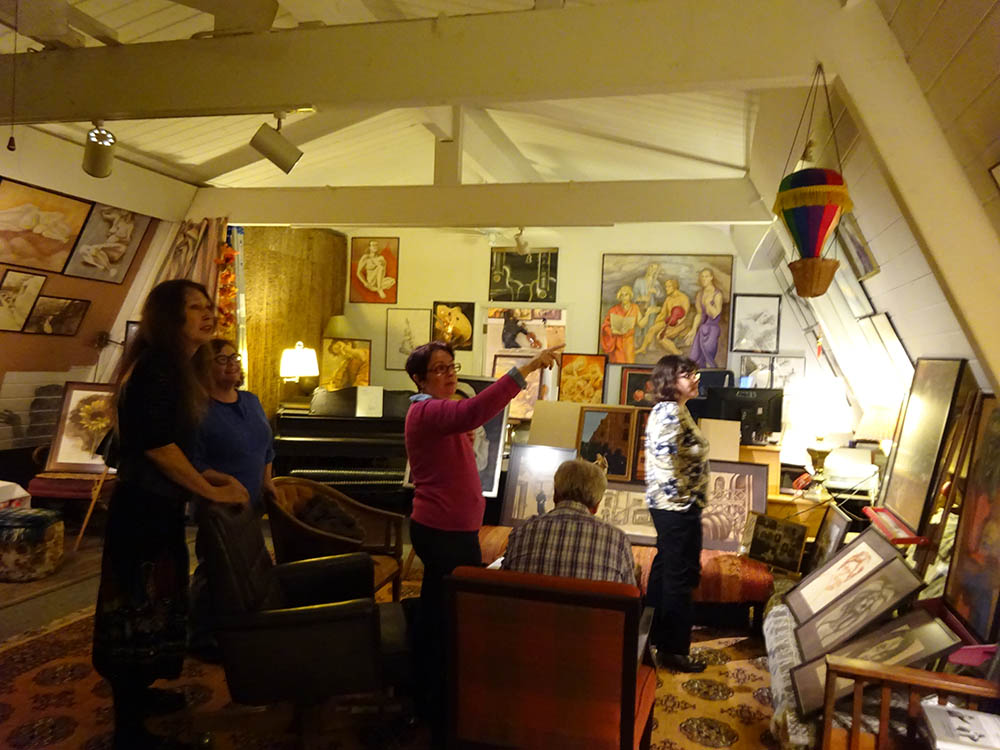
AUTUMN MARATHON: VISITORS FROM THE PAST
— James Manteith —
An unknown man’s voice sounds in the receiver.
“Is this Apraksin Court?”
“Yes.”
“I’m coming to the exhibit. How do I get there?”
Directions follow. And no one on either side of this conversation seems surprised until somewhat later, even though everyone knows Apraksin Court is in St. Petersburg, while the display under discussion is in Oakland, California, by San Francisco Bay.
That evening, the morning’s caller climbs a flight of outdoor stairs to the second floor, enters Tatyana Apraksina’s studio, has a look and says, “It’s Apraksin Court!” He well remembers the sight of these buildings: in the ’70s, he worked among them, loading crates of heads for hammers. Such things stay in the memory! And in those same ’70s, in the same city sector, the artist who unexpectedly for herself would be known as Apraksina had different tools in her hands, logging the experience that grounded her earliest exhibits.
Most of Apraksina’s early art has long since dispersed among collections and friends. Yet now, decades later, some works from that time have suddenly found her in the United States. Returned to the author after many years in a private collection in Germany, eighteen drawings and paintings, by now a part of history, determine the focus of this exhibit, entitled “Visitors from the Past.” The majority of these works haven’t seen their author in at least twenty years. Sometimes much longer. Images half-effaced in memory reassume their original clarity, dimensions in physical space. “Nothing’s ever really gone,” says a viewer, recalling personal witness of such transitions. “Everything returns.”
“Visitors from the Past” is scheduled for three days: October 29-30 and November 1, 2015. Showings then extend through the whole of November. An autumn marathon. Complex symmetry can be sensed with the Petersburg trip undertaken by the artist the previous spring, when for the first time in sixteen years Apraksina set foot in her own court and own original studio, a site which also hosted a meeting with the past, with paintings miraculously intact after their author’s long absence. There, on that side of the earth, other keys to truth surfaced. And here, more keys appear, no less needed.
Recently Apraksina compared art with gates: it doesn’t replace reality but may help gain entrance there. Moreover, she added, no gate is final or absolute. This justifies crafting ever new gates, as well as restoring the old. Among these early works, the theme of gates sometimes occurs literally, as more than metaphor, in the shapes of city archways, vivid symbols where the commonplace merges seamlessly with fate.
Prepared for the exhibit, sheets and canvases from the Leningrad of the ’70s, ’80s and early ’90s form a semicircle facing the studio loft’s entrance. Among the works created off Apraksin Lane in Leningrad are some from the artist’s Gaze from Within cycle of courtyard landscapes. The full cycle was first shown at the city’s Library of the Academy of Sciences in 1984. One scene shows a side street leading into Apraksin Court. Others complement the panorama with interstitial courtyards from adjacent neighborhoods. All the courtyards are approached from a personal perspective, with no attempt to exit a human scale for the sake of effect. “Painfully familiar,” says one viewer — who grew up in these mazes of Dostoevsky’s Petersburg — then repeats, “painfully familiar. Even after I left, I kept seeing these courtyards in my dreams. Like labyrinths of the subconscious. ” In these monochrome pastels, the solitary figures who make rare appearances seem at one with the courtyards, while the courtyards themselves, even when deserted, seem at one with human life.
Shortly after its opening, says the artist, the Academy of Sciences exhibit was hastily removed under pressure from state security. Yet in that brief interval, this first large-scale showing managed to cause a stir, to become an event. “Why was the exhibit taken down?” many now ask, Americans and not only. “What was there to dislike, what was offensive?” That era is separated from the present not only by a change of government but also by altered aesthetics. The specific defiance implied in visual language fades into the past. Yet such memories are easily refreshed. “Come on!” scoffs Apraksina, paraphrasing a fellow of serious rank who debriefed her back then. “‘Couldn’t you find something more appealing in our beautiful city than garbage bins and a blind old lady?'”
“Exactly!” another viewer lends a vintage stock remark. “And our beautiful country has no such thing as old age.” At any rate, apparently neither human aging nor architectural decrepitude ought to have been shown like this — unfiltered: free of the lens of political ideology, even of the ideology of naive sentimentality. Here reality is shown open to discourse, inclusive of the full range of human reactions, from fear to love, even love addressed to shambles, free of artificially imposed subtexts.
Incidentally, says Apraksina, she herself has no information as to the woman’s blindness, a trait simply assumed by many — including luminaries of nonconformism, with their specific criteria of contemporary relevance — mainly because the figure carries a cane.
When interpreting art, there’s something questionable about overemphasizing the times of its creation. These works’ content transcends topical issues of stagnation-era Leningrad. Nonetheless, it’s natural to respond personally to traces of historical moments. “I was exactly like that,” professes one viewer, pointing to an unabashedly declarative image of a nude cellist against the backdrop of a withdrawing street crowd comprising solely men, defined by impenetrable backs and anonymous hats. “Always a black sheep. I know just how he feels. Since then the dark guys have disappeared, and the naked and strange ones remain. It’s a great painting, right out of Magritte.”
“New dark ones took their place all the same,” his companion, recently returned from Moscow, corrects him.
The viewer accepts the fairness of this rejoinder. Still, he says, he no longer feels alone: black sheep, he ventures, manage to find one another.
Meanwhile, other works — drawings dating from a still-earlier time (they even include exact dates of creation: 1974, 1975, 1977…) — delineate people with little or no reference to surroundings. Such works might be said to portray the inner life within the courtyards’ domiciles. Not without attention to such inner, hidden life does the artist’s creative course turn to the courtyards’ emptiness and wornness to buttress further stages of progress. The exhibit gives an inkling of origins. Despite a certain randomness in the set of works that found their way into this particular collection, this sampling offers, for instance, a self-portrait from 1974, a pivotal year for its author. Beside this drawn portrait is an old photograph, taken that same year by Boris Mikhalevkin: the artist sits by a piano, in front of a wall completely covered by provocatively sharp, freshly completed sheets. “Isn’t it just pure ’70s?” adds Apraksina. “So expressionist. Posturing, longing for self-declaration.”
Maybe. But the current spontaneous time warp serves as an occasion to ponder the values of that time’s rebels and where their rebellion led — in this case, say, contrasted with others.
A professional therapist attending the exhibit sees everything in her own way, interpreting the works’ subjects in terms of inherent sexual energy. “But you’re an artist, you sublimate!” This could be stated with other tropes, but some kind of sublimation certainly has a place here. Another viewer, surprised by the variety of themes, media, styles, posits that the author may have several personalities. But the author asserts the opposite: one personality simply need not subordinate life’s diversity to a single mold.
All the works reveal a feminine origin, with formal symbols of this, says the therapist, though various cases find varied sublimations, sometimes transitioning into masculinity. Yet it occurs to the artist that, for instance, in traditional Chinese yin-yang symbology, the same symbols — curve and corner, vertical and horizontal — carry diametrically opposite connotations. One way or another, namely a totality of opinions is adequate to the fullness of art itself.
Much discussion surrounds a large-scale pastel of 1975, “Premonition,” depicting a mutual embrace between a child — a “golden boy” — and a “green man” (as one viewer calls him) who clearly has many years behind him. The nature and meaning of this pairing is enigmatic: the “green man” hardly wins every viewer’s sympathy and trust. Perceptions diverge. “I think the feelings here are familiar to any mother,” one woman say. “She wants to hold her child all her life!” Or, in another version: “‘It’s my baby! Don’t touch!’ That’s written all over that face.” The author proposes a new hypothesis, more general but no less substantive: “When I look at this scene now, I think it depicts how age or tradition encounters novelty. The old both protects and supports, while simultaneously assimilating, dominating the new, which needs the old but also feels a bit afraid of it.”
An American visitor to the exhibit has a memorable response, after familiarizing herself with the early works from the German collection, then with the studio’s wide range of fresh paintings: “Not one dead face.”
In turn, one of the artist’s compatriots, enthusing over the exhibit, asserts that he particularly likes frightening works of art, that he sees plenty of them here, but isn’t afraid. This art is frighteningly alive.
One might note a frightening aliveness and expressiveness lingering even in faces depicted in stylized manners bequeathed by bygone fashions. Behind such faces are individuals, personalities, whether real or imagined, as in the pastel with the strange English name “The Bells,” comprising stained-glass-like overlays of faces and chimes. “I know all these people,” someone says, then begins to narrate each of their tales in turn. The title is placed directly on the picture — a decision later quite rare for the author. “Why is the name in English?” she tries to answer. “Everyone was drenched in English-language rock lyrics. Some floated up out of that source, gave a hint…”
Alternatively, the name may allude to John Donne’s “For whom the bell tolls,” also figuring as the title of the novel by Hemingway, a writer much in circulation then. Here the visual image, like the poem bearing Donne’s line, invokes the interconnectedness of fragile human lives. No life in this world is insignificant, each life is inseparable from the other.
A peculiar feature of the collection-based exhibit is to mark the strongest, deepest side of the artist’s Leningrad span of creative development — her working out of the theme of musical performance — by no more than one piece, far from the most striking example. This is a modest portrait sketch of a violinist, drawn in charcoal during a rehearsal. A subdued presence. Yet this violinist is Mikhail Gantvarg; namely he was to be the muse, the heart of the artist’s whole musical line.
Seeing the portrait, a former Leningrader suddenly recalls her onetime attendance of Philharmonic concerts and her admiration for the orchestra’s then-concertmaster, whose name she hadn’t known until now. So these impressions, too, come full circle, are restored, concerning not only that life but life itself.
The composition of the audience at this exhibit warrants separate attention. Viewers make their way here from many different places: some from walking distance, others from nearby and even not-so-nearby towns and settlements. Half of the audience are Russian émigrés, while the rest are Americans of varying backgrounds. As for the Americans, besides having an eye-opening encounter with a hitherto completely unknown phenomenon at the intersection of Russian history and culture, they apprehend something more universal, common to all. The presence of violins, for example, in later pieces. From violin imagery it’s no stretch to talk of vibrations of the universe — indifferent to political, social or ethnic distinctions.
One American, however, expresses surprise over suddenly realizing her favorite artists have always been Russian. Another is thrilled by a feeling of seemingly popping up at a meeting of Russian intelligentsia. But the quality these people denote with the word “Russian” foremost likely relates to tastes native in themselves.
Those more used to viewing European art see more, while those for whom this is novel find it sufficient to contact the surface content or study spots of color… In this single studio has suddenly appeared “more art than the eye can take in at one time,” “more than in many museums,” in one American’s words.
And in this abundant studio, everyone feels uncommonly good and relaxed. People are pleased to spend time among the paintings, conversing, enjoying the spontaneous performance of Chopin and Schumann at the piano, an instrument more than appropriate here. In parallel occur unusual acquaintances, unexpected points of contact, the discovery of hidden meanings and connections. Some might be coming here for the first and only time in their lives, while some start visiting the show all but daily.
“You’ve created something unique here in this place,” one of the last viewers says on the way out. “It’s a great achievement. We’ll come again.”
Why is everything that’s been described happening here? “Artists’ creativity often shows up in the spaces they find to do their work,” an expert viewer says. It’s hard to escape a feeling of more than accidental convergence. Including the presence, with the works that traveled from Germany to this studio by boat and yacht slips, of a painting of a boy in a sailing uniform.
Apraksina plans to keep some of these recovered works. Others may continue their path onward, freeing their author for new creativity. In any case, part of attaining such freedom lies in willingness to face the self, including selves from the past.
Also abiding at the exhibit is an oil portrait of the woman in whose collection all these “visitors” spent many years, of whom it was said she lived in a museum. She found inspiration in these works; through her, these works inspired others. And at the exhibit’s close, having faced a new audience, she too seems to exude an aura of satisfaction. When the sacrifice of the past is accepted by the present, life wins. Even the past is capable of change, which brings more change to view a new horizon.

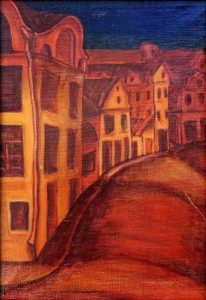
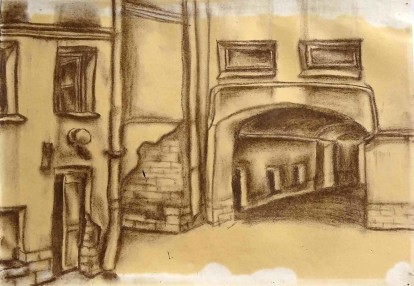
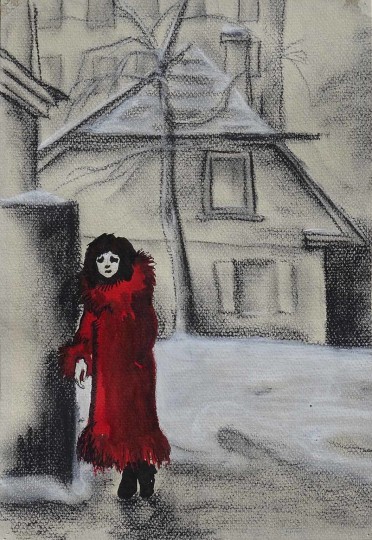
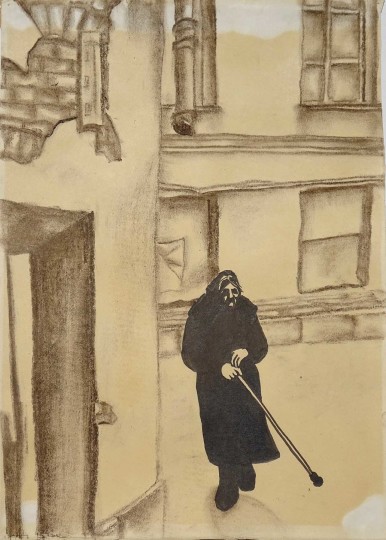
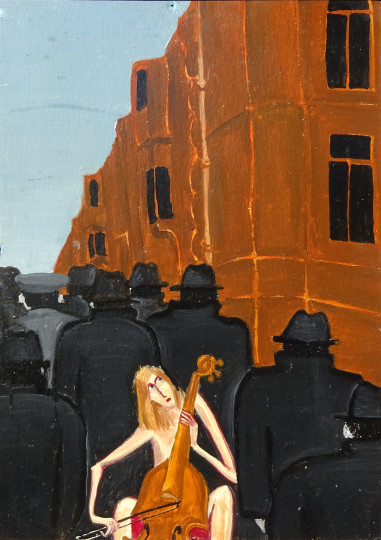
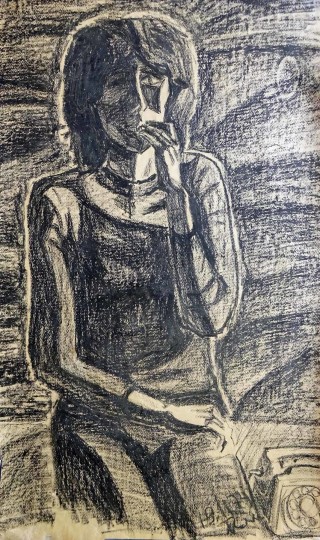
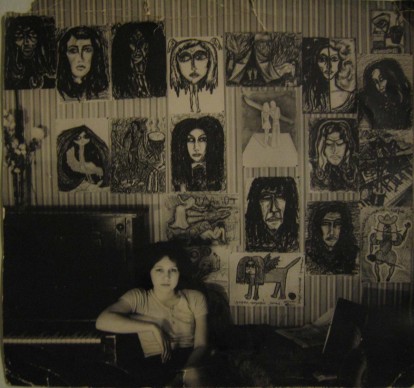
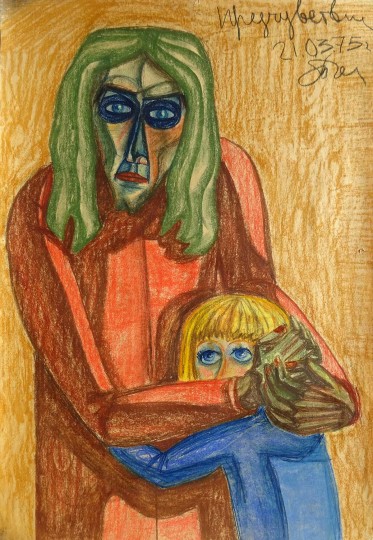
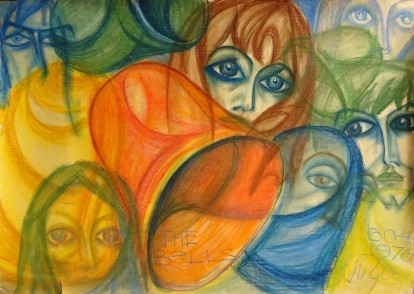
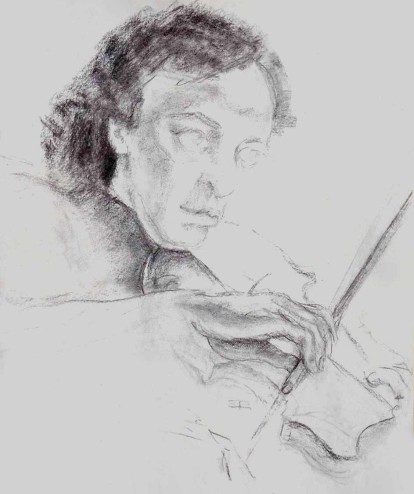
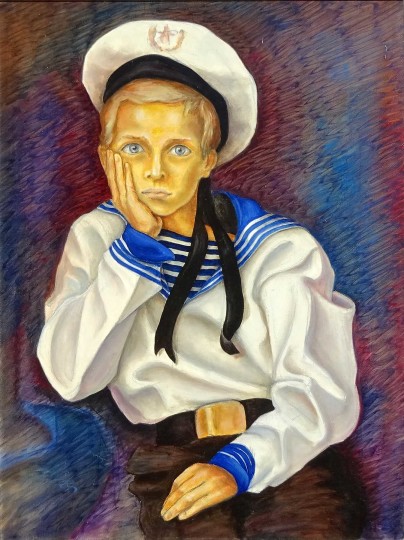
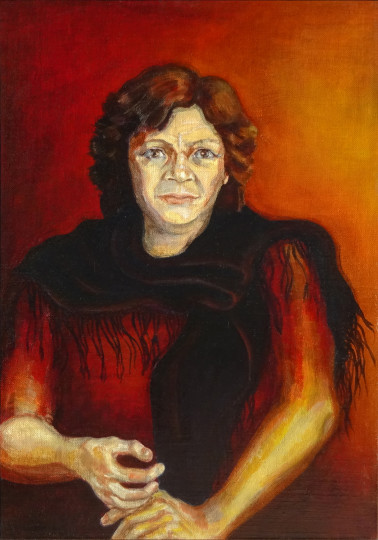
Speak Your Mind